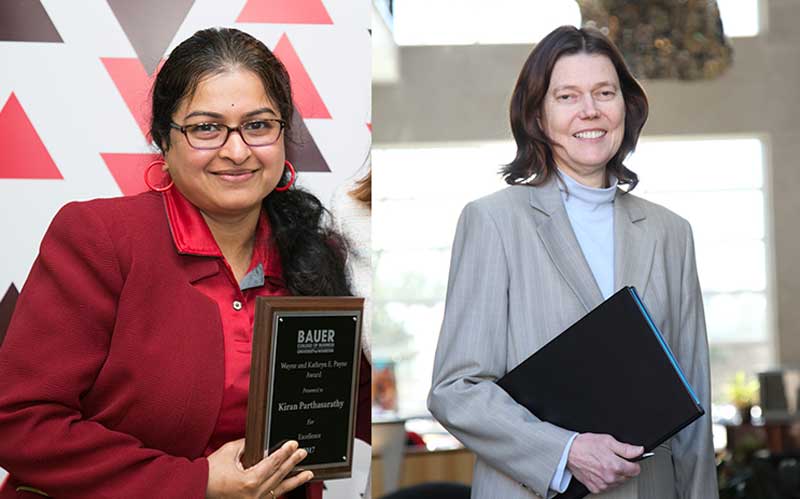Latest News
Multiple Modes for Course Success
Bauer Researchers Look at Effectiveness of Online Instruction in Accounting Field
Published on September 21, 2021

When the pandemic disrupted traditional face-to-face classrooms, faculty at the C. T. Bauer College of Business improvised on the spot, adding new modes of learning to reach students in multiple ways as classes transitioned online.
Because research exploring the effectiveness of online instruction is limited, two of Bauer’s accounting professors decided to investigate what worked best for the more than 1,000 students taking a managerial accounting course during the spring semester in 2020.
In their resulting paper, titled, “Did COVID-19 Impact Student Learning in an Introductory Accounting Course?” published in the Business Education Innovation Journal, Associate Professor Janet Meade and Assistant Professor Kiran Parthasarathy begin by summarizing what existing research has identified as three types of interaction inherent in effective online courses: learner-to- instructor, learner-to-learner, and learner-to-content.
When at least one of these forms of interactions is incorporated into teaching, positive results are associated with student achievement and satisfaction. Interactions with peers, instructors, and content help online learners create interactivity and a sense of community and that these correlate with positive learning outcomes.
The Bauer researchers assessed their students to identify what learning modes students relied on: in-class interaction, watching instructor-created video, both modes, or none at all. Their findings: Students who increased both types of interaction after the COVID-19 transition outperformed all others on the final exam. Likewise, those who increased learner-to-content interaction (video only) while reducing learner-to-instructor interaction (coming to classes) also performed well, but at a lower level. Students who reduced both types of interaction underperformed the other two groups.
“The findings of this research suggests that student success, at least at the undergraduate level, is associated with engaging students live and providing good videos (multiple modes),” Parthasarathy said.
Meade added that the increasing cost of higher education is forcing more students to take part-time and full-time jobs, resulting in less study time and greater demand for flexible modes of instruction.
“But does instruction that is accessible 24/7 provide the same educational benefits as a live lecture?” Meade said. “Can students compensate for missed classes by interacting more with the course material?”
Meade added: “Our study indicates that for most students, learner-to-content and learner-to-instructor interactions are not compensatory – that watching a course video does not compensate for missing a class lecture,” Meade said. “Instead, our results indicate that in a virtual classroom environment learning is improved when students interact both with the course material and instructor.”


